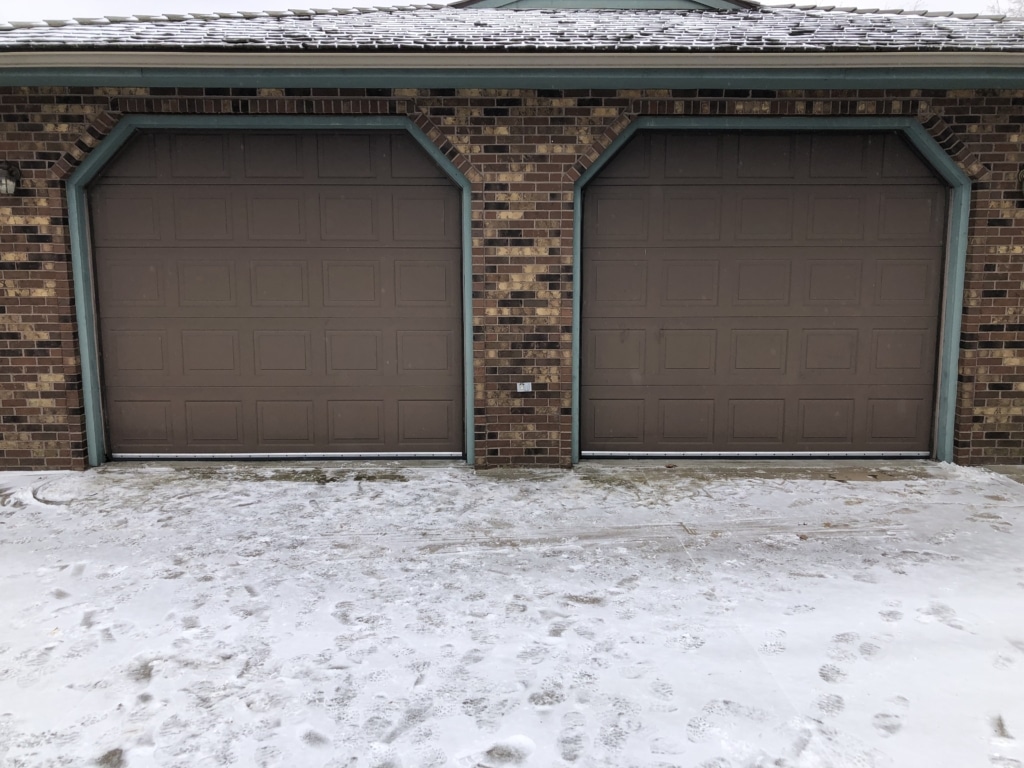For many of us, our garage is an important part of our home. It’s a place where we store our cars, tools, and other belongings. Unfortunately, it’s also a place where rodents can enter our homes if we’re not careful.
Challenges With Garage Doors
Mice and rats can squeeze through incredibly small spaces, which means that they can easily enter your garage through cracks and holes in the garage door. It does not matter if you have a wood garage door or a metal garage doors; if there are any openings, rodents can enter.
Another challenge is that many people do not close their garage doors when they leave home, which makes it even easier for rodents to get inside. Once they’re in, they can start chewing on wires, getting into food, and leaving droppings everywhere.
An uneven concrete floor can also create spaces for rodents to squeeze through. If you have any cracks or holes in your garage concrete floor near the garage door, it’s best to fill them in as soon as possible.
If the door jamb or your garage door sides are not in good condition, it might have cracks or holes that rodents can use to enter your garage.
To prevent these critters from ruining your belongings—and your peace of mind—it’s important to seal up your garage door so that rodents can’t get in.
Sealing the Gaps in Your Garage Door
There are two main ways to seal the gaps in your garage door: using caulk or using weatherstripping. Both of these methods are effective, but there are some key differences between them.
Properly sealed Garage Door
Caulk is a waterproof sealant that is applied directly to the cracks and holes in your garage door. It is relatively inexpensive and easy to apply, but it does require some time to dry completely. Once it’s dry, caulk creates a durable barrier that will slow up the rodents.
Garage Door Bottom Seal
Weatherstripping is a flexible strip of rubber or plastic that is placed along the edge of your garage door. It compresses when the garage door is closed, creating a tight seal that rodents cannot get through. Weatherstripping is also relatively inexpensive and easy to install, but it does require some periodic maintenance to ensure that it stays in good condition.
Which Method Is Right for You and Your Garage Door?
The best way to seal your garage door depends on your needs and preferences. If you’re looking for a quick and easy solution, caulk might be the way to go. If you want something that requires minimal maintenance, weatherstripping might be a better option.
Of course, you don’t have to choose just one method—you can always use both caulk and weatherstripping for extra protection against rodents. No matter which method you choose (or which combination of methods you use), sealing the garage door gaps is an important step in keeping your home rodents-free.
Make sure the door seal is properly installed and sealed properly.
Making sure that the new garage door seal is properly installed and sealed is important to keep rodents out. If the threshold seal is not installed properly, it will not be effective in keeping mice and rats out. If you’re not sure how to install or seal the threshold seal properly, you can always hire a professional to do it for you.
Regularly check the weather seal on your garage door.
Even if you’ve installed the garage door bottom seal properly, it’s important to check them regularly to make sure they’re still effective. Mice and rats can gnaw through a weather seal, so it’s important to inspect them regularly for signs of wear and tear. If you notice any damage, you can either repair the seal or replace it with a new one.
Keeping rodents out of your garage isn’t always easy, but it’s definitely worth the effort. These pesky critters can cause a lot of damage—chewing through wires, contaminating food supplies, and building nests out of your belongings. To prevent them from wreaking havoc in your home, start by sealing up any garage door gaps. You can use caulk, weatherstripping, or both to create a barrier that mice and rats cannot get through. Taking this simple step will go a long way toward protecting your home from these pesky pests.
FAQS: Garage Door Seals
What are the benefits of sealing a garage door?
Sealing a garage door has many benefits, including preventing rodents from getting into the garage and causing damage, keeping out drafts and noise, and improving the insulation of the garage.
How do I install a garage door threshold seal?
To install a garage door bottom seal, you can use caulk or weatherstripping. Caulk is easy to apply but takes time to dry completely, while weatherstripping is more difficult to apply but requires less maintenance.
What types of garage door seals are available?
There are many types of seals available, including silicone caulk, foam weatherstripping, vinyl weatherstripping, and metal weatherstripping. You can choose the type of seal that best suits your needs and preferences.
Do I need to use both caulk and weatherstripping?
You don’t have to use both caulk and weatherstripping; you can choose one or the other depending on your needs. However, using both methods together will provide extra protection against rodents entering your garage.
How often should I check the seals for damage?
You should check the seals on your garage door bottom regularly for signs of wear and tear so that you can repair or replace them as necessary. By taking these simple steps, you can keep your garage door seal in good condition and help prevent rodents from getting into your garage.







Protect Your Investment with the best Bird Deterrents for your Roof Solar Panels - Bigbugs says: